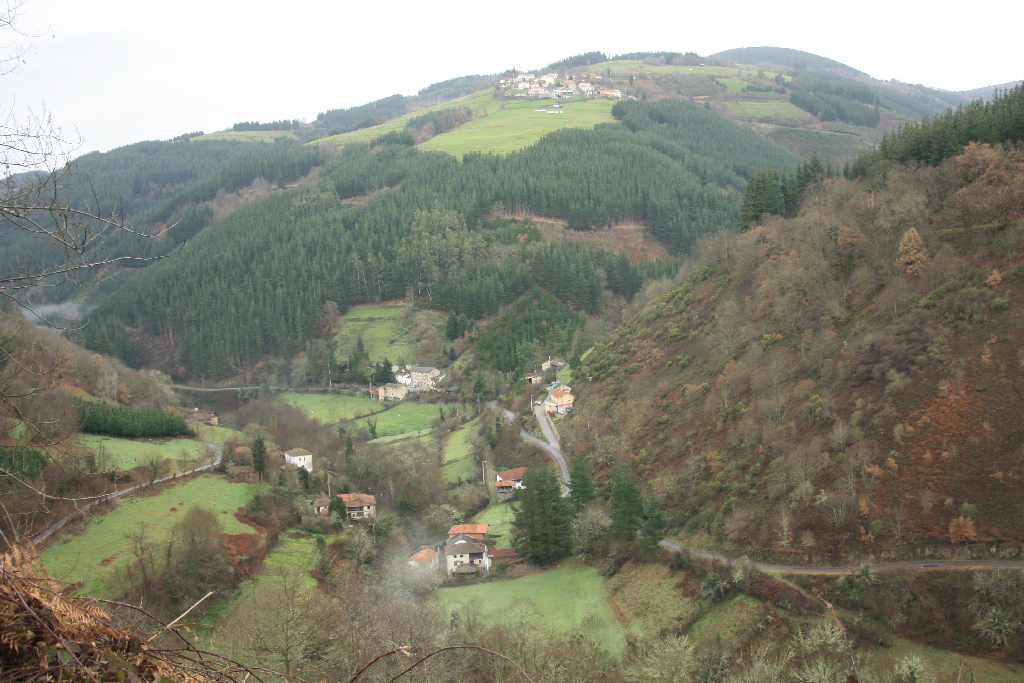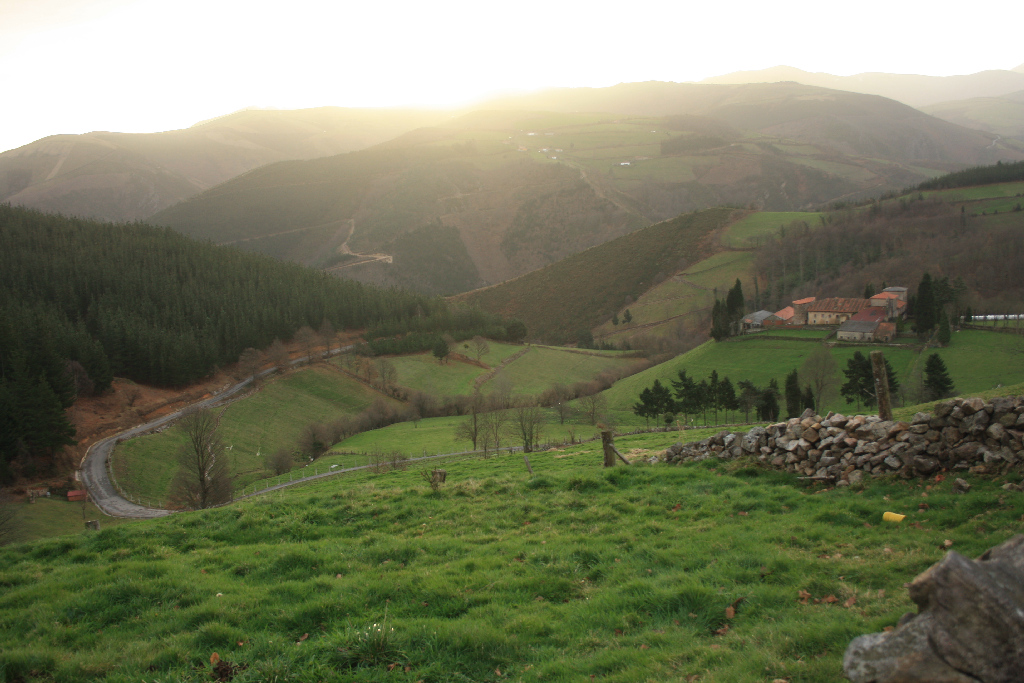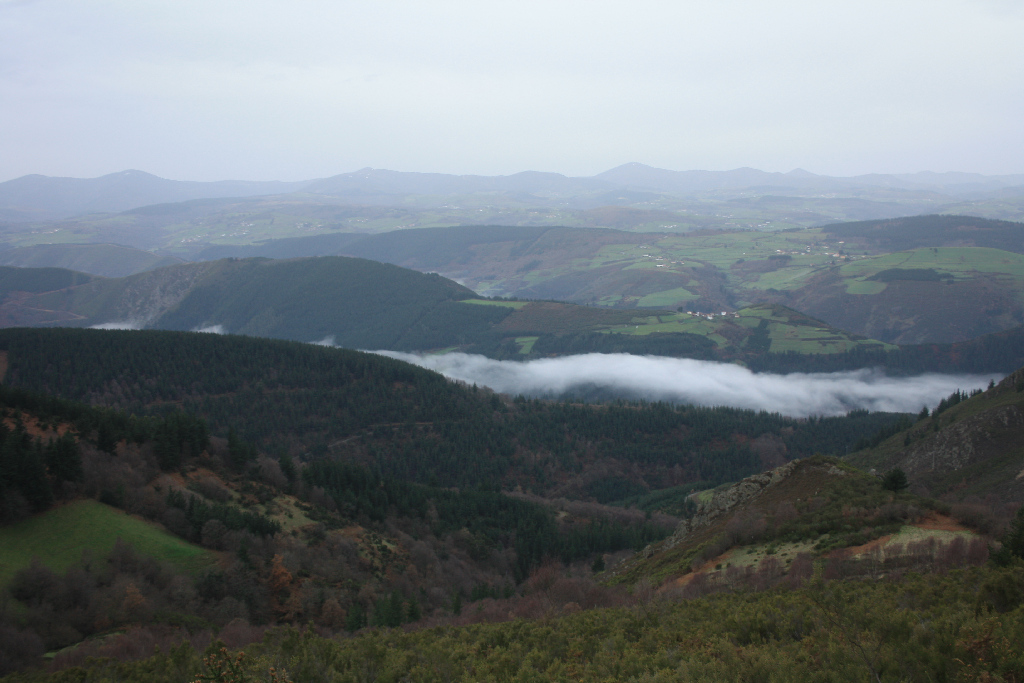- Home
- Rural Development
- Nature Trails
- Nature Trails
- Northwest Sector
- Cordillera Cantábrica. Asturias interior
Stage 21: Tuña - Onón
Description

From Cuarto de la Riera to Cangas del Narcea
The Nature Trail begins in Tuña, the capital of Cuarto de la Riera (County Tineo). It heads southwest to the neighbouring county of Cangas del Narcea, passing through small villages such as Llamas del Mouro, a town famous for its traditional black pottery.
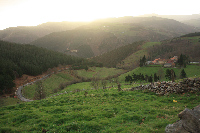
The Nature Trail begins in Tuña, the capital of Cuarto de la Riera, a veritable showcase of stately architecture that served as a residence for noble families such as the Riego y Tineo, Rodríguez de la Tuña, Flórez Valdés, Peláez de Arganza, Quinones or Garcia de la Sierra, to name a few. Since the Middle Ages, and over the centuries, these families built a large number of palaces and manors in this town, which was elected Typical Asturian Town in 2000.
The first part of the Nature Trail starts at Tuña. A paved road runs for about seven kilometres to Llamas del Mouro, in Cangas del Narcea County. In this first stretch, the route passes through heath and reforestation pine forests, leaving the Falxeirua River Valley to the left and Sierra de Dagüeño in the distance.
The second part of the route approaches Llamas del Mouro, skirting around Pico Canalón (930 m), which separates the counties of Tineo and Cangas del Narcea. Llamas del Mouro, famous for its black pottery, is a parish of San Martín de la Sierra. The local potter's workshop is situated to the right of the chapel of Virgen del Carmen.
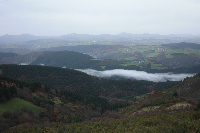
The Palacio de Sierra, a magnificent property owned by the Sierra family, built around a medieval round tower, is located in the centre of Llamas del Mouro. The building has a seventeenth century façade, though the main body is from the sixteenth century. A beautiful chapel was later added to the palace. The entrance is emblazoned with the coat-of-arms of the Sierra and Columbus families, descendants of the discoverer of America. The interior is decorated with historicist furniture. The chapel has a separate entrance, although a gallery provides direct access to the house. The baroque altarpiece holds a Romanesque Madonna with a Child.
Leaving Llamas del Mouro behind, the route turns to the right onto a dirt road that leads to El Mouru, whence there are impressive panoramic views from Tineo to Pico Cazarnoso (1,386 m) in Cangas del Narcea. The route continues through a radiata pine forest, veering left to descend gently towards Bruelles.
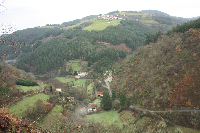
The last stretch of this section starts in Bruelles. The route turns off the road to the right, onto a dirt track that runs next to Santarbás chapel and its namesake recreation area. Soon after, the route turns left onto a road towards San Martín (Samartín), from where it continues along a dirt track to Tandes. The road to Onón, the endpoint of this section, starts in this village.
Sites of interest
Profile
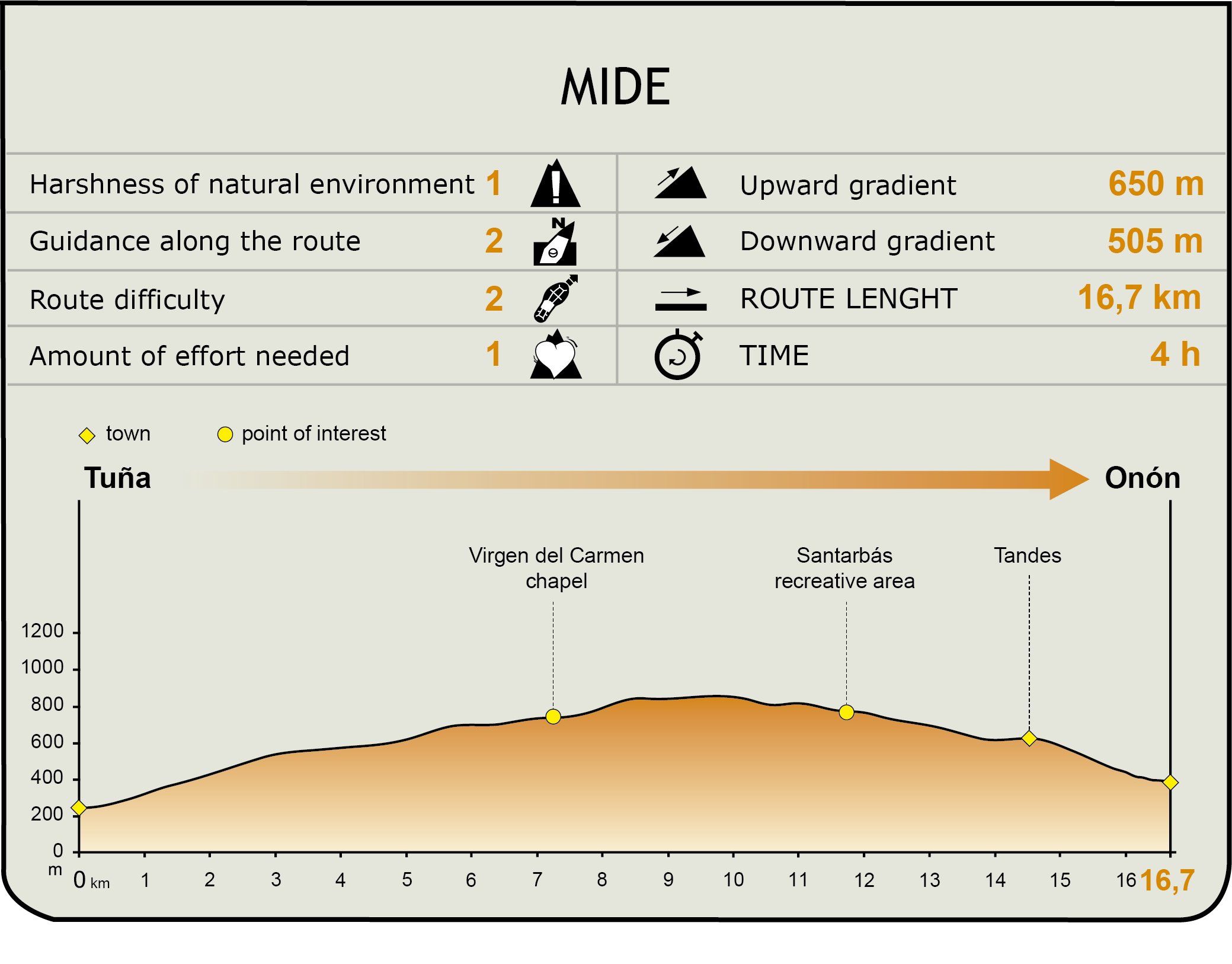
MIDE (Method for the Information of Excursions)
Featured
Further information
Tuña monumental ensemble
The Palace of Riego y Tineo, or Barreiro as it is also known, located in the Castañeu district, dominates the landscape of Tuña. A family of seafarers and soldiers, the famous General Rafael del Riego, leader of the Cabezas de San Juan revolt which resulted in the Liberal Triennium, between 1820 and 1823, was one of its members. The south facade has two square towers, of which the right one is probably from the late Middle Ages. The rear façade has a second twin tower, while the eastern side has a colonnade holding a wooden gallery. The entrance is emblazoned with the coat-of-arms of Peláez de Arganza y Llano, Tineo and Valdés. Most of the palace, the largest in the town, was built during the eighteenth century.
There are countless palaces and manors in the centre of Tuña. Many were originally medieval towers, such as the Casa de la Torre, with a three-storey, square tower and the coat-of-arms of Bernardo García engraved on its side. As for farmhouses, there are at least three notable manors: Casa Torre de Cienfuegos, Torre de Miranda and Casa de la Chamborra, the latter on the outskirts of the town, and the birthplace of General Riego. This whitewashed manor, from the late eighteenth century, has a plaque commemorating historical events, as well as the coat-of-arms of the Peláez y Pambley and the Rodríguez de Tuña.
The 18th century, pink parish church in the town centre, with a Latin cross floor, vaulted semicircular arches and a belfry crowned with pinnacles, is also noteworthy. The temple has a sleek exterior and elegant interior, with several emblazoned chapels that hold the remains of all the noble families who at some point lived in Tuña.
Many stately buildings and palaces still exist in this town. One of the largest, the Palacio del Cabo del Río, or Peláez de Arganza as it is also known, can be found alongside the Genestaza River. It has a monumental, three bay façade, with two recessed wooden corridors along the central bay, and two towers on the sides. It was built between the sixteenth and eighteenth centuries. Nearby, on the road to Merillés, is the stonework Carral Bridge with a single oval arch.
Black pottery of Llamas del Mouro
The black pottery typical of the area is still made in Llamas del Mouro using traditional medieval shapes and methods: shiny black vedríos, pots, escudiellas and penadas.
The black pottery of Llamas uses two types of clay, pale and colorao (red), carefully chosen to obtain the optimal blend for adequate moulding and baking. The pale clay is soaked in a kneading trough. The red clay must be free of impurities and pulverised, i.e. peñerado, before it is added to the pale clay at a ratio of 1:4. Both clays are kneaded together and divided into pellets, or balls of clay that are turned on the lathe.
Once the pieces have been moulded and slightly dried in the sun, they are burnished with a piedra de mar, which is also used to create different motifs. The black colour is obtained by baking the pieces in a reducing atmosphere. For this, the kiln is tightly closed and its only chimney is plugged to prevent air from entering. Thus, the smoke penetrates all the pores of the clay, lending the pieces their typical black colour.
Fortified settlement of El Castiello (Valcabo)
Near the Nature Trail, close to the village of Valcabo, towards Becerrales, is the fortified settlement of El Castiello, a fine example of a pre-Roman, 1st century A.D. settlement. Its location, on a small promontory, is typical of this type of settlements. It sits within a semicircular enclosure. The remains of the three large concentric moats that surrounded its western section are still visible. On the east end, the rough terrain was in itself a natural defence.
Santarbás chapel and recreation area
On a hill, with sweeping views to the south, near Bruelles, is Santarbás recreation area. Nearby is the eponymous pre-Romanesque chapel. The Battle of Lutos is commemorated every June 19th with the pilgrimage of Santarbás to this church, in which a famous cattle contest takes place, as well as the traditional custom of throwing a barrage of "voladores".
Nothing but the foundations is left of the original Santarbás chapel. The current building dates back to around the fifteenth century and has been subsequently altered. The parish feast, deep-rooted in tradition, is celebrated with a pilgrimage and a traditional picnic.
